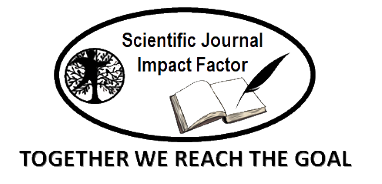أثر التكنولوجيا الزراعية على الاستدامة الزراعية في ليبيا: دراسة قياسية باستخدام نموذج VAR للفترة (1990–2022)
الكلمات المفتاحية:
التكنولوجيا الزراعية، الاستدامة، الإنتاجية الزراعية، ليبياالملخص
هدفت هذه الدراسة إلى تحليل دور التكنولوجيا الزراعية الحديثة في تعزيز الاستدامة الزراعية في ليبيا، مع التركيز على التحديات التي يواجهها القطاع الزراعي . اعتمدت الدراسة على منهج وصفي تحليلي باستخدام بيانات سلسلة زمنية للفترة من 1990 إلى 2022. تم تحليل المتغيرات باستخدام نماذج إحصائية متقدمة مثل اختبار التكامل المشترك (Johansen Test) ونموذج الانحدار الذاتي (VAR).. أظهرت النتائج وجود علاقة تكاملية طويلة الأجل بين التكنولوجيا الزراعية والإنتاجية، حيث تبين أن التفاعل بين التكنولوجيا والإنفاق الحكومي والعمالة الزراعية يؤثر إيجابًا على الإنتاجية الزراعية. ومع ذلك، كشفت الدراسة أن التكنولوجيا وحدها لا تكفي لتحسين الإنتاجية دون دعم سياسات فعالة وتدريب المزارعين. كما أبرزت النتائج أهمية العوامل الاقتصادية والاجتماعية في تعزيز كفاءة استخدام التكنولوجيا. خلصت الدراسة إلى توصيات تشمل تعزيز الاستثمار في التكنولوجيا الزراعية، تحسين السياسات الحكومية الداعمة، وتدريب العمالة الزراعية لضمان الاستدامة. كما دعت إلى تطوير بنية تحتية تكنولوجية ملائمة للظروف الليبية وزيادة الوعي بأهمية التكنولوجيا الحديثة في تحقيق الاستدامة الزراعية.
المراجع
1. العباسي، حنان علي محمد. 2011. محددات استدامة الانتاج الزراعي في اقليم فزان. رسالة ماجستير غير منشورة. كلية الزراعة جامعة طرابلس.
2. خالد رمضان البيدي و بذير أحسد نهير. (2019 ).القطاع الزراعي، الواقع والتحديات والرؤية المستقبلية لتحقيق التنمية المستدامة.
3. العباسي . حنان علي محمد.( 2024 ). قياس نمو الانتاجية الكلية لعوامل الانتاج الزراعي في ليبيا ( 1980 - 2020 ) (: مؤشر مالمكويست) . مجلة صرمان للعلوم والتقنيةVol 6, No.2, Jun -: 423 ~ 434
4. د. عبد الحميد أبوبكر يوسف, د. محمد سالم موسى, & د. بحري محمد الغناي. (2019). اهمية السياسات الزراعية في تحقيق الاكتفاء الذاتي من السلع الزراعية الغذائية في ليبيا. مجلة البيان العلمية, (3), 156-141.
5. أبو فروة.عبد المطلوب أحمد. 2012 . تقدير دالة إنتاج كوب دوجلاس لقطاع الزراعة في ليبيا (دراسة تطبيقية للفترة 1970-2008 ).SINAI Journal of Applied Sciences
6. Békés, G., Harasztosi, P. (2020). Machine imports, technology adoption, and local spillovers. Review of World Economics, 156, 343-375.
7. Ben-Hamed, U., & Elhoush, M. (2014). The Agricultural Investment in Libya. In International Conference on Agricultural, Ecological and Medical Sciences (AEMS-2014) July (pp. 3-4).
8. Farag, F. S., & Ab-Rahim, R. An Empirical Analysis of Causal Relationships between Agricultural Labour and Agricultural GDP in Libya.
9. Farida, Y., Hamidah, A., Sari, S. K., & Hakim, L. (2024). Modeling the Farmer Exchange Rate in Indonesia Using the Vector Error Correction Model Method. MATRIK: Jurnal Manajemen, Teknik Informatika dan Rekayasa Komputer, 23(2), 309-322.
10. Johansen, S. (1988). Statistical analysis of cointegration vectors. Journal of economic dynamics and control, 12(2-3), 231-254.
11. Khan, N., Ray, R. L., Sargani, G. R., Ihtisham, M., Khayyam, M., & Ismail, S. (2021). Current progress and future prospects of agriculture technology: Gateway to sustainable agriculture. Sustainability, 13(9), 4883.
12. Madlul, N. S., Mustafa, M. S., & Rahim, F. I. (2024, April). Economic analysis for impact of some monetary policy variables on the value of agricultural output in Iraq using VECM model. In AIP Conference Proceedings (Vol. 3079, No. 1). AIP Publishing.
13. Obaia, A. R., & Ghazy, M. I. (2017). The study of agricultural mechanization indicators in Eastern Libya. Misr Journal of Agricultural Engineering, 34(2), 567-580.
14. Ruzzante, S., Labarta, R., & Bilton, A. (2021). Adoption of agricultural technology in the developing world: A meta-analysis of the empirical literature. World Development, 146, 105599.
15. Sadeg, S. A., & Al-Samarrai, K. I. (2021). Securing Foods In Libya C0ncepts, Challenges And Strategies. The Libyan Journal of Agriculture, 25(3).
16. Salem, M. A. (2024). An Economic Study of the Current Situation and Future Perception of Agricultural Credit in the Arab Republic of Egypt. Journal of Sustainable Agricultural Sciences, 50(2), 193-199



























